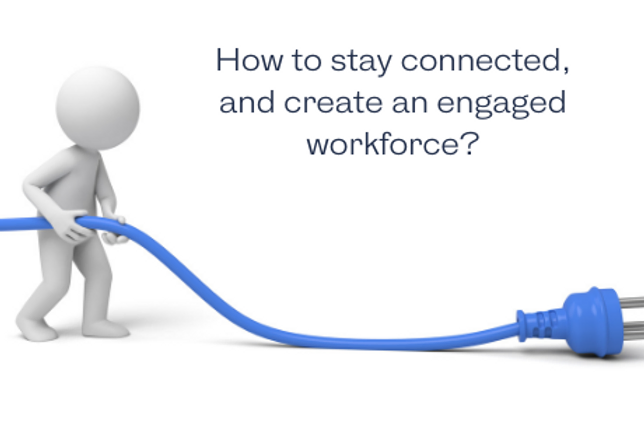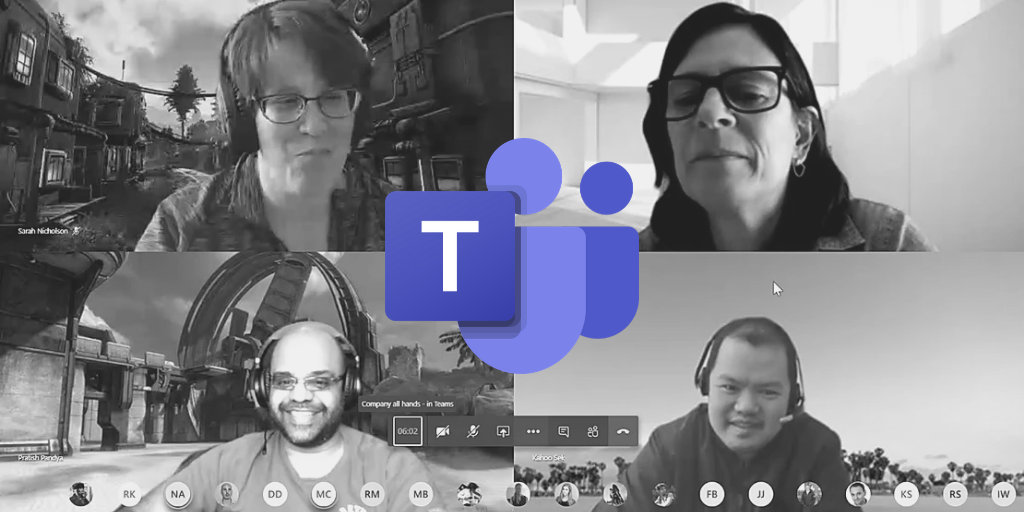The end of Universal Analytics is almost here - are you prepared?
As the digital landscape evolves, so does the fate of Universal Analytics (UA). On 1st July 2024, Google will decommission UA, ushering in the era of Google Analytics 4 (GA4).

This is no longer a temporary problem. A recent Gartner poll showed us that “48% of employees will likely work remotely at least part of the time after COVID-19 versus 30% before the pandemic” so planning and investment now has to be considered part of your long-term communication and provision strategy.
One way to promote engagement is to involve employees in your decision-making process throughout the cycle of change.
What are people missing most? Where are the blockers to seamless collaboration? Is it process or technology that lets you down?
This has benefits beyond lip service to a consultative process, as you allow people to reflect their working practice and innovate accordingly - it can make your business stronger as “your employees can supply you with new ideas that you would never of thought of” Mike Kappel, Forbes 2020. This in turn creates an environment of innovation and productivity, where people bounce ideas off each other. In research carried out by Accenture there are tangible business benefits from this kind of approach where employers and employees communicate and listen to each other:
“Aligning leaders’ perceptions with those of their employees would yield significant upsides. Everyone would advance faster, and global profits would increase by US$3.7 trillion.”
Creating a positive and engaging company culture needs to be a partnership between leaders and employees. In order to create and nurture a company culture, there is some hard work to be done wrote Heidi Kurter for Forbes recently:
“Culture cannot be created artificially and it doesn’t happen overnight. It requires consistent attention, nurturing and evaluating. More importantly, employees need to be included in the process.”
No matter where you are working from it is important to have regular check-ins with your staff on a one to one and team basis, whether it be on a video conference call, real-time chats or in person. This means that everyone stays up to date with what is going on and it builds employee trust and engagement levels.
“One to ones are incredibly important to maintain trust in the workplace and should be prioritised, however hard that might be. This means video-calling might be essential to maintain body language.” (Raconteur 2020)
Hence, we shouldn’t limit ourselves to using just voice calls and instant messaging to communicate at work but that we must make an effort to visually connect on video if you can’t in person. This means that it is easier for leaders to check-in and connect with their employees as they can see each other and one another’s social cues.
Microsoft 365 enables chat, call and collaboration by teaming up SharePoint with Teams – at Clerkswell we can show you how to use these tools according to best practice and get the most out of your Microsoft investment.

Many of us are missing the social element of traditional office work so it is important that when you do check in with your staff that you take the time to connect. According to Sir Cary Cooper, professor of organisational psychology at Alliance Manchester Business School, it is important to take the time to ensure that “the conversation isn’t solely task-focused.” To effectively support your staff emotionally and check in on them, sometimes you have to talk about things other than work tasks. For employees to feel comfortable talking about their emotions, you need to have a relationship with them, which is built through regular check-ins.
Moreover, in research carried out by Gallup showed that managers who regularly meet with their team, are three times more engaged than those who don’t.
When an employee feels appreciated and valued by their employee, their contentment at work increases and they are much more likely to go above and beyond for their employer. Data from IBM demonstrates that
“employees who feel their ideas and suggestions matter are more than twice as likely to report a positive employee experience than those who don't (83 percent vs. 34 percent).”
As a company and as a team, you should celebrate employee wins, no matter how small. Leaders must be able to recognise and provide feedback to their employees on a personal and company-wide scale. This can be through real-time chats, video calls, an announcement on your EasyShare SharePoint intranet news page, or on Yammer or even as part of an established rewards scheme you have in place.
Microsoft Teams new stay connected experience will also help individuals strengthen relationships with their colleagues by making it easy to praise top collaborators for key achievements and to schedule one-on-ones to catch up.

The key to a successful workplace is to cultivate an open, safe and trusting environment for employees and leaders alike. Especially, at a time when a large proportion of the workforce are working remotely, leaders have no choice but to trust their employees to do their work at home.
A Raconteur article titled “The role trust plays with a remote workforce “ they reported that “employees in high-trust organisations are better at collaborating, more productive and show greater loyalty than their peers in low-trust companies”.
Transparency is key. Employers should want everyone in their company to feel able to speak freely and openly in an individual and team settings, and trust their opinion is valued and acted upon when necessary. This also means that if anyone has an issue, it can be discussed and hopefully alleviated before it becomes a problem where people start to complain and resent the company and their job.
There are several ways to make sure your organisation have an open work environment. One of the key ways to do this is to keep an open line of communication with your employee through individual and team chats, so that people at least have the opportunity to speak up. Another method is to carry out surveys and polls on your company intranet to see what is and isn’t working, and make the necessary changes.
If there are open communication routes between managers and peers it allows employees to speak openly and honestly, and get the emotional support that they need. Mary Baker, a HR expert for Gartner said that
“Two-way communication with managers and peers provides employees with the information and perspective they need, and enables them to express and process negative emotions and feel more in control.”
In turn, it also allows managers to build open and trusting relationships that mean they can support staff and alleviate stress so that people are happier and working efficiently.
In summary, it is essential for any organisation’s success that they regularly communicate and foster input from its employees. It is something that should be embedded in the day to day workings of leaders and their employees, with a balance between technology and process.
If you are ready to foster an open and collaborative work environment, talk to ClerksWell about Microsoft 365 and how our Modern Workplace accelerator EasyShare Modern Intranet can help you get connected using the best of SharePoint, Teams, Planner, Stream and much, much more.
To learn more, book a demo today to see what your Modern Workplace could be via our contact us.
As the digital landscape evolves, so does the fate of Universal Analytics (UA). On 1st July 2024, Google will decommission UA, ushering in the era of Google Analytics 4 (GA4).
Our PCI compliance services.
Read more about Sitecore's recent release of version 10.4 as evaluated by Sai Makala, one of our Sitecore experts.